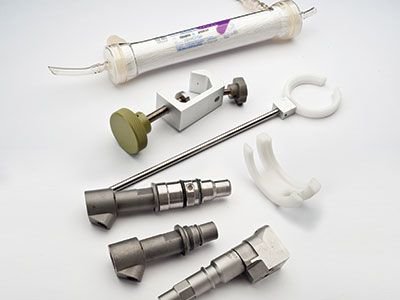3D Printing for Medical and Aerospace Parts?

Additive manufacturing (AM), also known as 3D printing, continues to gain traction in all areas of manufacturing. Today it is used to produce everything from fuel nozzles for jet engines to hip implants for geriatric patients, and does so quickly and accurately.
In hardly any time at all, almost any CAD file can be converted into a metal or plastic component with tolerances measured in thousandths of an inch, often with structural integrity rivaling that of conventionally cast and forged materials. To manufacturers looking for low-cost prototypes, AM is a wish come true.
The question then, is why have so many medical and aerospace parts manufacturers, and their CNC precision-machining suppliers, cast a wary eye at 3D-printed prototype parts?
A lot of it simply comes down to not yet having the confidence that additive manufacturing can provide the precision that is so critical to medical and aerospace-parts.
Here is a prime example. Protomatic is a precision CNC machine shop. We specialize in CNC machining for aerospace components as well as CNC machining for medical devices. While we embrace additive and subtractive technologies alike, there are a number of reasons why AM is not readily accepted by the medical and aerospace industries. They include the possibility of “micropores” that could create infection paths, concerns over material strength in demanding applications, and relatively high surface-roughness values compared to machined products.
Despite AM’s 20-year track record, there is still less historical performance data than with subtractive manufacturing methods, which creates some uncertainty or risk in trying this ‘new’ technology. Engineers should be knowledgeable about the advantages and disadvantages of both processes, so they can select the best manufacturing method for any given product.
For parts required to stay in the human body for extended periods of time, as well as flight-critical aerospace components, validation testing for tensile and impact strength, temperature performance and hygroscopic behavior (permeability to liquids) may very well offset the cost and lead-time benefits offered by 3-D printing.
Will all that change and AM become more mainstream as it segues into actual production parts? I don’t think there’s any question that that day is coming. But for now, companies that depend on life-saving precision continue to depend on subtractive manufacturing.
About the author: Doug Wetzel is Vice President and General Manager of Protomatic. Protomatic is a CNC precision machining shop specializing in prototype and short-run-production components for the medical, aerospace and other technical industries.



